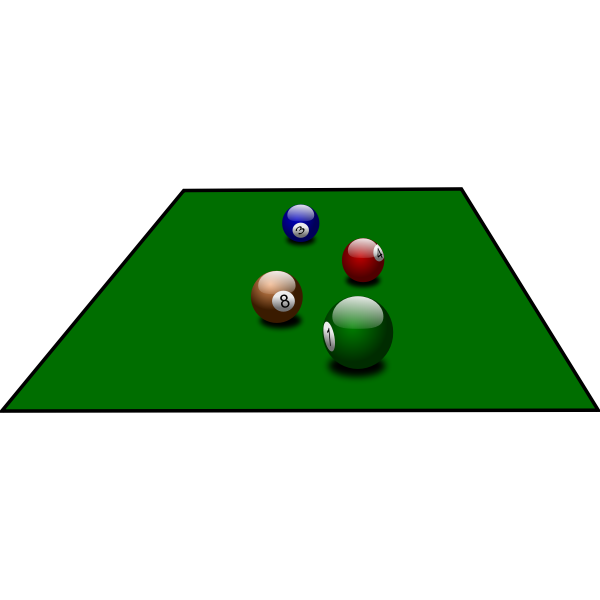How To Make Your What Is Billiards Look Amazing In Three Days
페이지 정보
작성자 Mindy Burfitt 작성일 24-08-04 03:56 조회 4 댓글 0본문

A difference of one part in a thousand: the same sort of difference that a flap of a butterfly’s wing might make to the breeze on your face. The millions of cells that make up your heart are constantly contracting and relaxing separately as part of an intricate chaotic system with complicated attractors. The purpose of a defibrillator - the device that applies a large voltage of electricity across the heart - is not to "restart" the heart cells as such, but rather to give the chaotic system enough of a kick to move it off the fibrillating attractor and back to the healthy heartbeat attractor. The main benefit to having a chaotic heart is that tiny variations in the way those millions of cells contract serves to distribute the load more evenly, reducing wear and tear on your heart and allowing it to pump decades longer than would otherwise be possible. Its weight keeps the table stable, reducing the chance of table movement affecting gameplay. Commercial aircraft are aerodynamically stable, so that a small turbulent nudge (possibly butterfly-related) won’t push the plane out of a level flightpath.
Modern fighter jets achieve great manoeuvrability by virtue of being aerodynamically unstable - the slightest nudge is enough to drastically alter their flightpath. To prove our claims above, we are going to exploit this simple idea, the mirror being one side of the billiard table. This means that the ball will bounce infinitely many times on the sides of the billiard table and keep going forever. In phase space, a stable system will move predictably towards a very simple attractor (which will look like a single point in the phase space if the system settles down, or a simple loop if the system cycles between different configurations repeatedly). A chaotic system will also move predictably towards its attractor in phase space - but instead of points or simple loops, we see "strange attractors" appear - complex and beautiful shapes (known as fractals) that twist and turn, intricately detailed at all possible scales. Though we may not be able to predict exactly how a chaotic system will behave moment to moment, knowing the attractor allows us to narrow down the possibilities. It was the first chaotic system to be discovered, long before there was a Chaos Theory.
There is a small story behind it which I am sure, you would like to know. I know I am. The best we can do for three bodies is to predict their movements moment by moment, and feed those predictions back into our equations … In 1887, the French mathematician Henri Poincaré showed that while Newton’s theory of gravity could perfectly predict how two planetary bodies would orbit under their mutual attraction, adding a third body to the mix rendered the equations unsolvable. In this case, Lorenz’s equations were causing errors to steadily grow over time. This meant that tiny errors in the measurement of the current weather would not stay tiny, but relentlessly increased in size each time they were fed back into the computer until they had completely swamped the predictions. The starting weather conditions had been virtually identical. The behaviour of the system can be observed by placing a point at the location representing the starting configuration and watching how that point moves through the phase space. Phase space is not (always) like regular space - each location in phase space corresponds to a different configuration of the system.
Phase space may seem fairly abstract, but one important application lies in understanding your heartbeat. Keeping an eye on the asteroids is difficult but worthwhile, since such chaotic effects may one day fling an unwelcome surprise our way. Though the dance of the planets has a lengthy prediction horizon, the effects of chaos cannot be ignored, for the intricate interplay of gravitation tugs among the planets has a large influence on the trajectories of the asteroids. In systems that behave nicely - without chaotic effects - small differences only produce small effects. The smallest of differences are producing large effects - the hallmark of a chaotic system. It also allows us to accurately predict how the system will respond if it is jolted off its attractor. Technically - yes. However, you will need to make some preparations first. No matter how consistent you are with the first shot (the break), the smallest of differences in the speed and angle with which you strike the white ball will cause the pack of billiards to scatter in wildly different directions every time. What at first glance appears to be random behaviour is completely deterministic - it only seems random because imperceptible changes are making all the difference.
If you have any sort of inquiries regarding where and ways to make use of what is billiards, you can call us at the web page.
댓글목록 0
등록된 댓글이 없습니다.